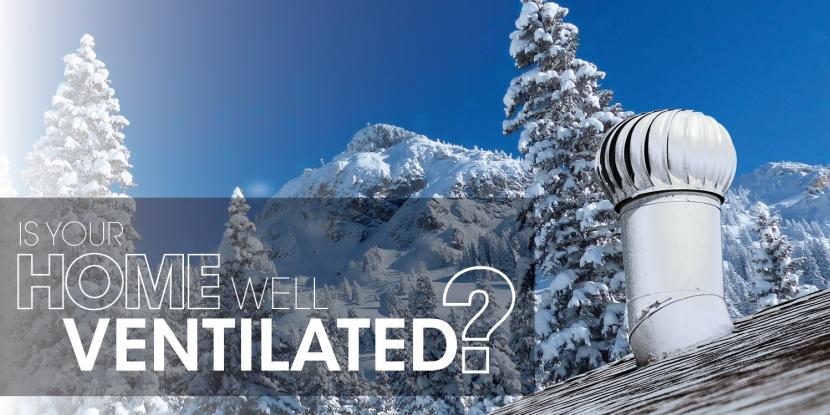Tired? Uncomfortable? Sniffling or coughing? It could be the ventilation in your home. Poor ventilation can make your feel stuffy and uncomfortably cold or hot, depending on the season. Poor ventilation can also trap harmful pollutants in your home, reducing indoor air quality and making the air in your home far more polluted than the air outside.
How can I tell if my home is poorly ventilated?
You’re uncomfortable.
- Improper humidity levels and temperatures that are hard to control can affect your comfort levels.
Things are steaming up.
- A little condensation may seem like no big deal, however if high levels of moisture and humidity are left unaddressed, these issue could lead to…
- Health issues from exposure to dangerous molds and bacteria.
- Ruined insulation.
- Wood rot and structural damage.
You don’t feel so great.
- Fatigue, sniffling, sneezing, hacking, headaches, and more can be attributable to trapped pollutants in your home taking a toll on your health. What’s ailing you?
- Trapped VOCs (volatile organic compounds) from the breakdown and outgassing of building materials, carpet and furniture.
- Chemicals from cleaners and air fresheners.
- Smoke (in homes with smokers or guests who smoke).
- Mold, bacteria and viruses.
- Carbon monoxide.
- Radon
- And more…
A breath of fresh air
Proper ventilation offers a breath of fresh air for you home – and for you. Achieving adequate ventilation in today’s airtight, energy efficient homes can be a challenge. The proper exchange of indoor air with outdoor air is integral to maintaining proper moisture levels, a comfortable temperature, and reducing indoor air pollutants.
How can I improve ventilation in my home?
- Natural ventilation
Opening doors and windows can naturally air out your home.
- Summer
Open windows and doors in the morning and evening, when temperatures are coolest, closing them before the mercury rises to give your HVAC a hand and help you feel more comfortable.
- Winter
Briefly opening a window in each room, simultaneously and for a very short time, can improve indoor air quality and oxygen levels in a tight home.
- Spot ventilation
Spot ventilation such as kitchen and bathroom exhaust fans can better control humidity issues in moisture-prone areas. It also takes some of the strain off the HVAC system’s struggle to remove excess moisture, and helps natural ventilation work more effectively.
- Mechanical ventilation
Mechanical ventilation, such as whole house fans, exchanges hot air inside your home with cooler outside air, reducing the need for air conditioning.
- Ceiling mounted
Ceiling mounted whole house fans vent air from your living room into the attic, where it escapes through vents.
- Ducted
Quieter, ducted whole house fans transport hot air directly outside of your home using ductwork.
- Structural ventilation
Structural ventilation, such as eave and ridgeline vents in your attic, control heat and humidity – not just in your attic, but in your living space as well. They also help your HVAC more easily control temperatures in your home. Have a crawlspace? To prevent moisture issues and structural rot crawlspaces must be properly vented as well. If you see visible mold or mildew in these areas, call a pro.
Ready to start breathing a little easier? Contact Aire Serv® today about ways to improve your indoor air quality.
